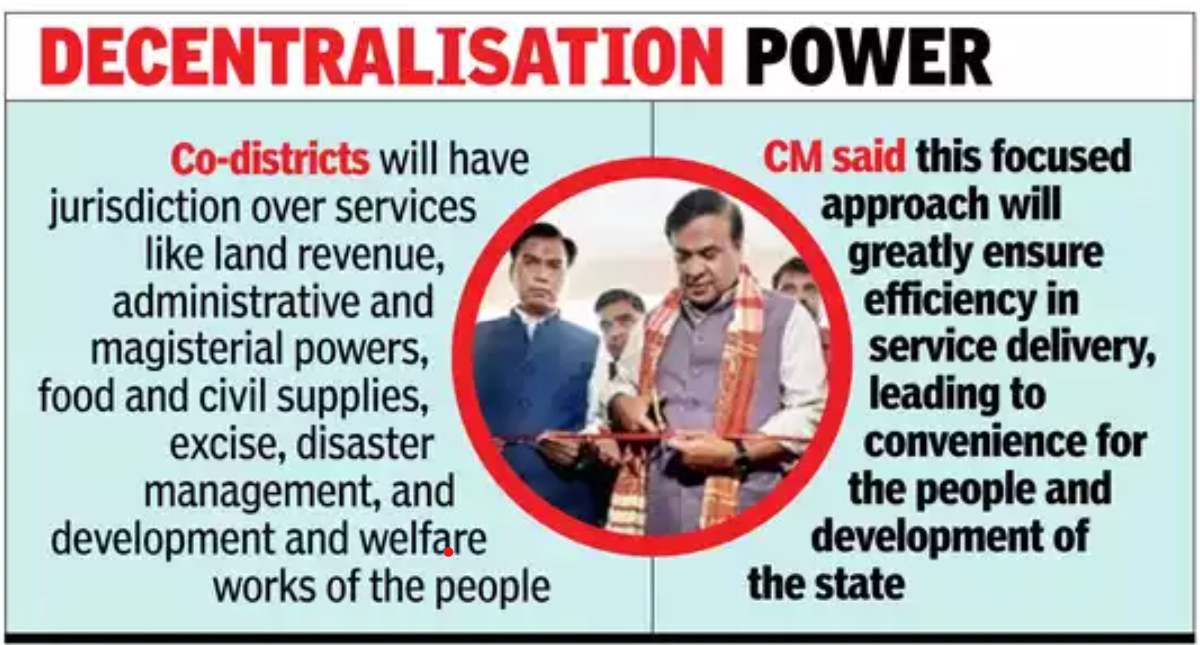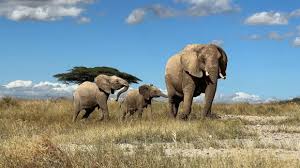Pradhan Mantri-Kisan Samman Nidhi (PM-KISAN) Scheme

- 05 Oct 2024
In News:
The Prime Minister of India is set to announce the 18th installment of the PM-KISAN scheme in Washim, Maharashtra. This will benefit over 9.4 crore farmers nationwide, with the government allocating more than ?20,000 crore for this initiative.
About PM-KISAN
The Pradhan Mantri Kisan Samman Nidhi (PM-KISAN) is a Central Sector Direct Benefit Transfer (DBT) initiative aimed at providing income support to farmers.
Key Features:
- Financial Assistance: The scheme offers ?6,000 annually to small and marginal farmer families, distributed in three equal installments.
- Eligibility: Initially targeted at families with up to 2 hectares of cultivable land, the scope was later broadened to include all farmer families, regardless of land size.
- Family Definition: The definition of a family under this scheme includes the husband, wife, and minor children.
- Identification of Beneficiaries: State governments and Union Territory administrations are responsible for identifying eligible farmer families based on the scheme's guidelines.
- Direct Transfers: The funds are directly credited to the beneficiaries' bank accounts.
Exclusion Criteria
Certain categories of individuals are not eligible for benefits under the PM-KISAN scheme, including:
- Institutional Land-holders: Those who hold land under institutional ownership.
- High-Profile Government Officials: This includes former and current holders of constitutional posts, ministers, members of legislative assemblies, mayors, and district panchayat chairpersons.
- Government Employees: Serving or retired officers and employees of central or state government ministries and departments are excluded.
- Pensioners: Retired pensioners receiving a monthly pension of ?10,000 or more, as well as those in the previously mentioned categories, are also ineligible.
- Income Tax Filers: Individuals who have paid income tax in the last assessment year.
- Registered Professionals: Professionals such as doctors, engineers, lawyers, chartered accountants, and architects who are engaged in practice and registered with professional bodies.
India's BRAP 2024 Alignment with World Bank's B-READY Index

- 05 Oct 2024
In News:
- The Indian government plans to align indicators of the BRAP 2024 index with the World Bank’s B-READY index to enhance business readiness rankings.
- State Involvement: States have been instructed to address gaps identified in the B-READY evaluations to improve their global rankings.
- Indicators Included: The upcoming 2024 BRAP rankings, prepared by the Department for Promotion of Industry and Internal Trade, will incorporate specific indicators from the B-READY index.
- Enterprise Survey Launch: An enterprise survey for the B-READY index in India is set to start in October, with support from the Ministry of Statistics and Programme Implementation.
- Participation Timeline: Although B-READY rankings will commence in 2024, India’s participation will begin in 2026. The initial rankings will cover 54 countries, expanding to 120 in 2025 and 180 in 2026.
- Successor to Previous Rankings: The B-READY index replaces the Ease of Doing Business rankings, which were discontinued in 2021 due to irregularities. It considers a broader range of factors in its assessments.
- Benchmark for Global Institutions: The B-READY framework will serve as a benchmark for global financial institutions and multinational companies to evaluate a country’s regulatory and policy environment.
- Historical Improvement: India improved its Ease of Doing Business ranking from 142 in 2014 to 63 in 2020.
- Technical Understanding: A team of government officials is tasked with understanding the technical aspects of the B-READY index to formulate strategies for improving India’s score.
- Lifecycle Parameters: The new index tracks ten parameters throughout a firm's lifecycle, including business entry, utility services, and labor, focusing on real-world applications rather than just legal changes.
- Recent BRAP Rankings: The BRAP 2022 rankings were recently announced, with Andhra Pradesh and Kerala achieving the top positions.
Co-district Initiative

- 05 Oct 2024
In News:
Assam has launched an innovative administrative initiative by inaugurating 21 'co-districts' as part of its Phase 1 rollout, which began on Friday and will extend into Saturday, ultimately introducing a total of 39 co-districts. This new structure replaces the previous system of 24 civil sub-divisions, aiming to bring governance closer to the citizens.
About the Co-District Initiative
- Structure: Co-districts serve as smaller administrative units within the larger district framework, each headed by an Assistant District Commissioner.
- Objective: This unique initiative, the first of its kind in India, seeks to enhance accessibility to governance and address administrative challenges faced by district administrations.
- Scope: The government plans to establish co-district offices in all 126 assembly constituencies in Assam.
Functions and Powers
The co-districts will handle a variety of important functions, including:
- Land Revenue Matters: Managing land-related issues and revenue collection.
- Development and Welfare Work: Overseeing development projects and welfare programs.
- Excise and Disaster Management: Addressing excise-related matters and coordinating disaster response efforts.
- Administrative Control: Co-districts will have authority over all departmental activities within their jurisdiction.
- Magisterial Powers: Commissioners will be empowered to issue permissions for events and manage other administrative tasks.
- Routine Administrative Tasks: Responsibilities include issuing ration cards, caste certificates, and land sale permissions.
India-U.S. MoU on Critical Minerals Supply Chains

- 05 Oct 2024
In News:
- The sixth Commercial Dialogue took place in Washington on October 4, 2024, led by Indian Union Minister of Commerce Piyush Goyal and U.S. Commerce Secretary Gina Raimondo.
- MoU Signing: A day prior, the leaders signed a memorandum of understanding (MoU) aimed at expanding and diversifying critical minerals supply chains to enhance resilience.
- Focus Areas:
- Identification of equipment, services, policies, and best practices for the development of U.S. and Indian critical minerals, covering:
- Exploration
- Extraction
- Processing and refining
- Recycling and recovery
- Identification of equipment, services, policies, and best practices for the development of U.S. and Indian critical minerals, covering:
- Context: This agreement follows China's export restrictions on gallium and germanium, critical for the semiconductor industry, and its ban on technology related to rare earth magnets and critical materials extraction.
- Strategic Goals:
- Promote open supply chains, technology development, and investment flows for green energy.
- Explore collaboration with other mineral-rich countries, particularly in Africa and South America.
- Progress on Semiconductor Supply Chains:
- Continued efforts to establish resilient semiconductor supply chains since the previous MoU.
- Completion of a "readiness assessment" by the U.S. Semiconductor Industry Association and India Electronics Semiconductor Association.
- Commitment to foster investments, joint ventures, and technology partnerships.
- Innovation Handshake: Success of roundtables in San Francisco and New Delhi aimed at enhancing innovation ecosystems and startup collaboration.
- Strategic Clean Energy Partnership: Discussions from the EIN Roundtable in March 2024 informed the U.S.-India Strategic Clean Energy Partnership meeting.
- IPEF Supply Chain Agreement: Significant progress noted in the IPEF ministerial meeting, focusing on semiconductors, chemicals, and critical minerals, particularly batteries and healthcare products.
- Future Collaborations:
- Focus on expanding U.S. Department of Commerce presence in India with approximately 70 Foreign Commercial Service staff.
- Plans for a U.S. trade mission to India in March 2025 aimed at supporting U.S. SMEs owned by underserved communities.
- Domestic Solar Manufacturing Protection: India reinstated the Approved List of Models and Manufacturers (ALMM) order to protect local solar PV module production against cheaper imports from China.
- Economic Context:
- The Economic Survey 2023-24 highlights China's expanding manufacturing trade surplus and its restrictive actions affecting India's access to solar equipment.
- India’s Production Linked Incentive (PLI) schemes have invested over $4.5 billion to bolster clean energy manufacturing but require additional policies to safeguard these investments.
Status of Elephant in India 2022-23

- 05 Oct 2024
In News:
- Shelved Census Report: The Environment Ministry has delayed the release of the elephant census report, “Status of Elephant in India 2022-23,” due to a lag in the Northeast census, with publication on hold until at least June 2025.
- Population Decline: Preliminary data from the report indicates significant drops in elephant populations across several regions:
- Southern West Bengal: 84% decline
- Jharkhand: 64% decline
- Odisha: 54% decline
- Kerala: 51% decline
- Developmental Threats: The report cites “mushrooming developmental projects,” including unregulated mining and infrastructure development, as major threats to elephant populations.
- Methodological Concerns: The Environment Ministry noted that refined counting methods could explain some discrepancies, suggesting new data may not be directly comparable to previous censuses conducted every five years since the 1990s.
- Old Counting Methods:
- Pre-2002: Elephants were counted using the “total direct count” method, which involved simple head counts but lacked scientific rigor for larger populations.
- 2002: Introduction of the “indirect dung count” method, where dung samples were used to estimate density based on decay rates.
- Sample Block Counts: Modified methods involved surveying limited areas (5 sq km) to improve detection accuracy.
- Elephants vs. Tigers: In 2021, a harmonized approach for estimating elephant and tiger populations was proposed, utilizing a similar block and co-variate methodology for both species.
- Genetic Mark-Recapture: The 2022-23 elephant census employed a genetic mark-recapture model using dung samples to identify individual elephants.
- Impact of Delay: Experts argue that withholding the available data hinders conservation efforts and governance. Delays could exacerbate the plight of elephant populations, particularly in regions facing specific threats, such as mining in Odisha.
Key Findings of the Unreleased Report:
- Overall Decline: The overall elephant population has decreased by 20% since 2017, with some areas reporting reductions of up to 41%.
- Regional Impact:
- Southern West Bengal, Jharkhand, and Odisha have seen losses of nearly 1,700 elephants.
- The Western Ghats region indicates an 18% decline.
- Northeast Region: The census for this area relies on extrapolated data from 2017, with approximately one-third of India's elephants located there.
- Contributing Factors: Habitat fragmentation, poaching, and human-elephant conflicts due to developmental activities are major threats.
- Conservation Recommendations: Strategies to strengthen elephant corridors, restore habitats, and enhance community involvement in conservation are vital.
- Challenges in the Northeast: Urban development, mining, and agriculture significantly threaten elephant movement and survival, underscoring the need for targeted conservation strategies.
- Conservation Status of Elephants in India:
- Leading States: Karnataka, Assam, and Kerala have the highest elephant populations.
- Conservation Status: Elephants are classified as Endangered on the IUCN Red List and are protected under multiple international conventions.
- Threats to Elephants:
- Habitat Loss: Rapid human population growth is diminishing elephant habitats.
- Fragmentation: Habitat disruption from construction and development projects is prevalent.
- Unlawful Killing: Human-elephant conflict often leads to retaliatory killings.
- Poaching: Targeting of male elephants for tusks continues to threaten genetic diversity.
- Conservation Measures:
- Financial support under various government schemes for habitat conservation and human-elephant conflict resolution.
- Establishment of 33 Elephant Reserves across 14 states.
- Collaborative efforts with railways and power departments to mitigate risks.
- Regular elephant census every five years by the Wildlife Institute of India (WII) for monitoring populations.
